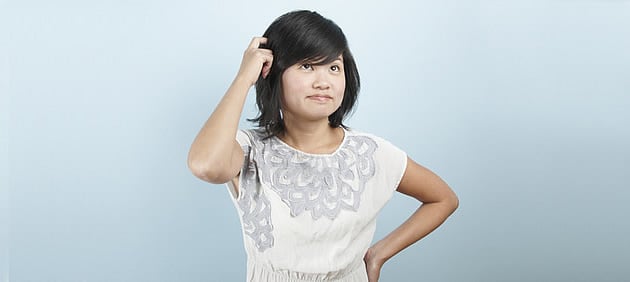Last Updated on April 2, 2023
This is the first in a series of articles aimed at helping A Level Art students with their Personal Study (a project which is required as part of CIE A2 Art & Design). This article outlines twelve guidelines for selecting a good topic. The recommendations are based on my own experience with the teaching of this component, discussions with examiners during CIE training days and the feedback given within Examiner Reports.

1. The topic must relate to Art or Design
This sounds obvious and something that should not need saying, but, absurdly, it does. For some, inexplicable reason, students continue to submit projects that are completely unrelated to Art or Design. This is a quote from a recent CIE Examiner Report:
There were numerous inappropriate submissions which were not concerned with any aspect of Art and Design. These included such topics as ‘Giving up smoking’, ‘The biology of the senses’, ‘Growing tea on a plantation’, as well as aspects of tourism, green issues and political themes.
2. The topic should be something that you are genuinely interested in
The ultimate purpose of your Personal Study is to teach you something: to help you develop as an artist and to strengthen your understanding of art-related issues. The most successful Personal Studies communicate ‘a strong sense of involvement through personal enthusiasm and a commitment to sustain the investigation’.
Simply speaking, when you are passionate about a topic, you are more likely to do well.
3. The focus of your Personal Study should be process and materials (the way an artist or group of artists use/s media) or subject or theme (the way an artist approaches a topic, usually with reference to composition and technique)
In other words, your Personal Study should involve the analysis of specific pieces of art; it should NOT be the life story of an artist or the documentation of a broad period of Art history (unless this somehow includes sufficient focus upon specific artworks).
4. A topic should provide you sufficient material to write about, while not being so vast that your project becomes all-encompassing, disjointed or surface-deep
In order to produce a high quality Personal Study, you need to have a clear, well-articulated focus. This gives you something to organise your project around and encourages you to write with coherence and structure (a lack direction is a common weakness in low achieving Personal Studies). Completing an entire project around the analysis of one or two artwork, for example, is limiting, while attempting to analyse Abstract Art in all of its entirety (without any connection to a specific artist) sets up an enormous, daunting task which cannot be given justice in the time given.
5. The study should be about someone else’s art (not your own)
This is an area where CIE Art & Design students are often confused. There is an incorrect belief that students are expected to submit a body of original creative work as part of the Personal Study, similar to that produced for the Coursework project (some students even go so far as submitting only original practical work or additional Coursework pieces for this component – often with no annotation or explanation – which does not satisfy the requirements of the Personal Study at all). While the Personal Study certainly can – and in the majority of cases should – include beautiful practical work completed by the student, the Personal Study is about analysing, studying and learning from other artists: it is NOT about producing original artwork on your own topic (more information about the images used in a Personal Study will be given in a subsequent article). This quote from CIE helps to clarify this:
The main aim of the Personal Study is to encourage candidates to focus on selected examples of existing works of art or design from established contemporary or historical practitioners, seen at first hand, by making critical judgements and personal evaluations.
Note that this article has been written for CIE A2 Art Personal Studies: Personal Studies required for other examination boards differ in some respects.
6. A link to your Coursework can be advantageous
Although it is not necessary for CIE Art & Design students to select a Personal Study topic which relates to their A2 Coursework project, the examiners comment that ‘good practice might suggest that a link between the two is advisable’. This is because a selecting a related topic allows you to acquire knowledge, skills and understanding that may help you to complete your Coursework to a higher standard. (Remember that if you refer to your Coursework project within your Personal Study you should include photos to help explain what you are saying. Each component is assessed individually and examiners do not have access to your Coursework project while they are assessing your Personal Study).
7. Choose a topic that allows you to view artwork first-hand
This is not a guideline: it is imperative. In my experience, the best CIE A2 Art Personal Studies are produced when students not only view artwork in the flesh (in a gallery or museum exhibition, for example), but are able to meet and interview the artist or designer and see their methods of working. This gives opportunity for the work to be understood in great detail (seeing true colours, textural surface qualities and the real scale of the piece) and encourages truly personal responses. It also means that students can take beautiful photographs of the artist or designer working in their studio and see all of the processes and various stages of completion. Examiners frequently report that lower grade Personal Studies ignore this requirement and depend more heavily on secondary sources: lifeless reproductions from books and the internet.
8. Contrasting and comparing the work of artists can be helpful
Studying the work of a mainstream or critically acclaimed artist alongside a local artist can be beneficial, especially if the local artist is less established. This gives you the best of both worlds (the enthusiasm and first-hand contact from a local artist, plus the insight that comes from studying historical, contemporary and/or international artists who work in another cultural context). You may, for example, choose to focus upon two artists who paint the same subject in a different way, or to discuss the influence of a famous artist upon a local painter. It should be noted that the examiners understand that many students will not be able to see all of the artworks they study in the flesh, so supporting first-hand study with those viewed in reproduction is absolutely acceptable.
9. Select a topic that is supported by quality reference material
While the Personal Study is centred around your own personal responses, drawing on the opinions of educated critics can provide insight and a depth of understanding: grounding, validating and/or challenging your own views. Before finalising upon a Personal Study topic for A2 Art, check to see if there are existing articles, books or online reviews about the artists in question. This also helps to verify that the artist you have selected has some standing in the art community and is thus likely to be an appropriate and valuable person to study. It should be noted, of course, that in many cases, the more well-known an artist is, the less time they have to accommodate visits from eager high school students; sometimes relatively unknown artists can be very skilled and have much to teach a high school Art student.
10. Word your title so that it captures the essence of your Personal Study and indicates a well-chosen focus
For example: ‘The Portraiture of [artist name]: An Appreciation of Light and Colour’ is more appropriate than ‘Portraiture in Art’. ‘The use of Symbolism in Traditional and Contemporary Weaving’ (an example given in the CIE 9704 Art & Design syllabus) is more appropriate than ‘The Art of Weaving’. ‘Landscapes of the Idurah Valley’ (another example given in the syllabus) is more appropriate than ‘Landscape Paintings’. ‘An Investigation into Gender Roles in Contemporary Art’ is better than ‘Contemporary Art’. In the former examples, the title helps to clarify the focus of the study; the latter suggest an enormously broad study that would be difficult to complete well. Similarly, it is also beneficial to avoid overly simplistic titles that convey little information, such as ‘[artist name] Personal Study’ or ‘Fish’. Ideally, the examiner a clear idea about what your study is about (and be impressed) from the first moment they encounter your project.
11. Select your Personal Study topic near the start of the A2 Art Course
The Personal Study is a large and comprehensive project. It is impossible to complete in its entirety (and achieve a good grade) at the last minute. It can be good practise to start thinking about your topic selection at the conclusion of the AS Course. High achieving students often use the winter or summer break, seeking out artists who are available for interview locally. This leaves them in a strong position to start the A2 year (it can be wise to touch base with teachers prior to making contact with an artist, however, to avoid wasting anyone’s time). Regardless of whether the vacation period is utilised, it is essential that the Personal Study receives regular attention (ideally within scheduled class time as well as in homework sessions) so that students can plan, research and complete the project in a systematic, organised way.
12. Submit an Outline Proposal Form to CIE before you begin
While this is not a requirement, all students should be encouraged to do this. Any concern about the suitability of a topic can be overcome by making use of the Outline Proposal Forms (OPF). This is a free way of gaining invaluable feedback from the official CIE Senior Moderator before you begin. Blank forms are available on the password protected Teachers’ Support Site and can be submitted electronically to CIE for approval. It is important to note that the brief feedback given should be read with great care and always adhered to. This form should then be retained and submitted along with the finished Personal Study.
An example of the CIE Examiner Reports quoted in this article can be found on the publicly accessible Art & Design section of the CIE website. Further reports are available from the password protected Teachers’ Support Site.
The next article in this series discusses how to write a Personal Study. A subsequent post will focus on the images. You may also be interested in reading our overview of the CIE A2 Art Personal Study.

